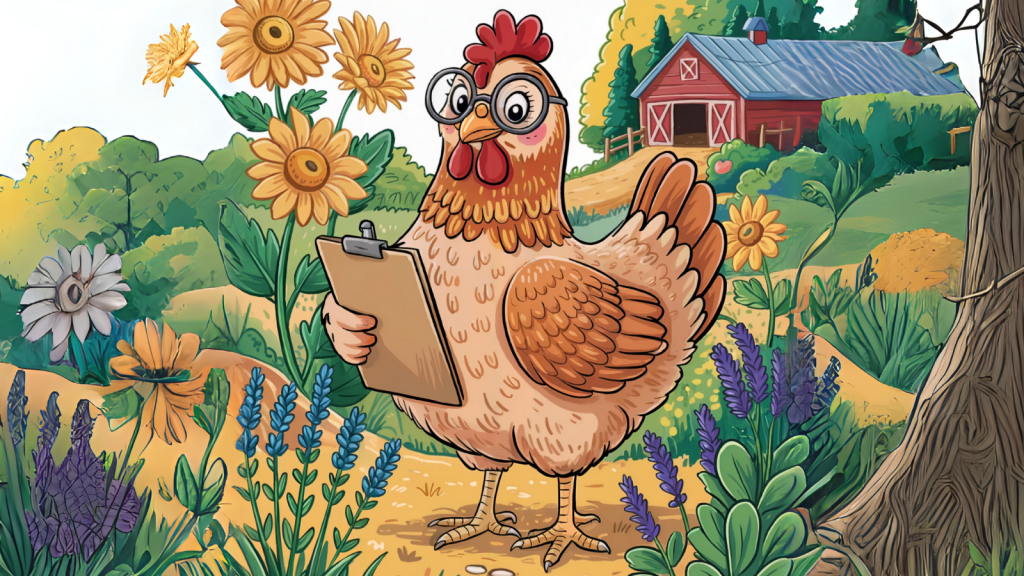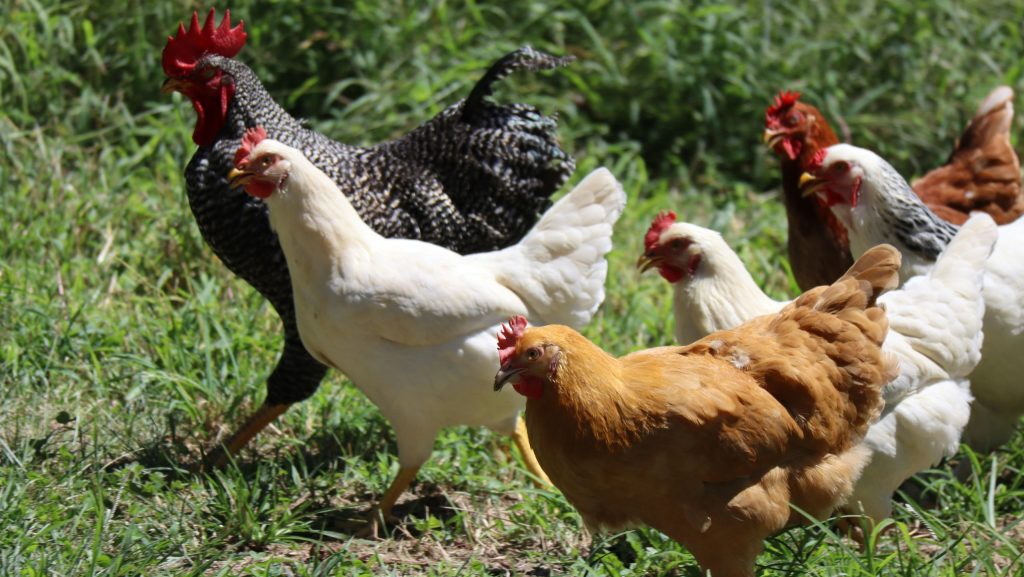From Chicken Chaos to Organized Bliss
When I first started raising chickens, it quickly became clear that tracking all the little details mattered far more than I’d anticipated. Feeding schedules, egg production, health notes, molting dates—who knew chickens came with so much paperwork? I only had a few hens back then, too.
Initially, I relied on scribbles on calendars, post-it notes stuck to the coop door, and mental notes that inevitably vanished. Keeping track of which hen laid how many eggs, who needed worming treatments, and remembering details of coop maintenance soon became chaotic. I’d find myself standing in the feed store, phone in hand, desperately scrolling through jumbled notes trying to remember if we were using the layer pellets or the grower feed that month.
I knew something had to change. Clearly, there had to be a better way.
The Real Costs of Poor Record-Keeping
Before diving into journals and record-keeping systems, let me share some hard lessons I learned from my early disorganization:
- Wasted Money: I’d buy duplicate supplies because I couldn’t remember what I already had. Those extra bags of oyster shell add up!
- Health Emergencies: When my Barred Rock, Pepper, suddenly stopped laying, I had no records to know if this was normal for her or not. What followed was an expensive vet visit that could have been avoided had I kept better egg records.
- Breeding Confusion: My attempts at selective breeding for better egg production fell apart because I couldn’t accurately track which bloodlines were producing the best results.
- Seasonal Amnesia: Every spring, I’d struggle to remember exactly what worked the previous year for increasing production, or which predator-proofing methods had been most effective.
These mistakes weren’t just frustrating—they cost real money and sometimes put my birds’ health at risk. After calculating that my disorganization had cost at least $340 in one year alone (in duplicate purchases and unnecessary vet visits), I knew a better system wasn’t optional.
Designing the Perfect Journal
That’s how the idea for “The Smart Chicken Keeper’s Chicken Management Journal” was born. But this isn’t a sales pitch—it’s a glimpse into why and how I created a simple yet powerful fillable journal to solve an everyday chicken keeper’s headache.
I started by envisioning what would genuinely help me manage my flock effectively. It had to be structured yet flexible enough that any chicken keeper—from beginners to seasoned pros—could pick it up and use it right away. The core idea was simplicity: clear, intuitive pages for logging egg production, tracking health checks, noting feed expenses, and planning coop maintenance without unnecessary complexity.
After studying my own chicken-keeping pain points, I identified seven critical areas any good chicken journal should address:
- A bird inventory
- Emergency contact info
- Egg production
- Income and expenses
- Feed log
- Coop maintenance
- Health records
- Treatment log
- Incubation/hatchery guide
- And quite bit more.
Testing and Refining the Journal
Putting the journal together was surprisingly enjoyable. I began by designing initial layouts in Canva, testing various templates, and sharing drafts with fellow chicken keepers for practical feedback.
My first version was admittedly too complicated—I had included so many tracking elements that even I felt overwhelmed using it. A fellow chicken keeper from my local co-op bluntly told me, “I’m not filling out a dissertation every time my chicken lays an egg.” That feedback was invaluable.
I simplified ruthlessly, focusing on what information actually mattered day-to-day. I tested the revised journal during a full seasonal cycle with my own flock of twelve birds, making notes about what worked and what didn’t. This real-world testing highlighted areas that were too complicated and helped me refine the design to something genuinely useful.
After several iterations, the journal felt right—straightforward, clear, and genuinely helpful. I knew it was working when I found myself reaching for it automatically whenever I visited the coop, rather than viewing record-keeping as a chore.
Navigating the KDP Publishing Process
Publishing through Amazon KDP (Kindle Direct Publishing) was straightforward but came with its own learning curve. I had to learn about formatting pages correctly for print-on-demand, ensuring margins and spaces were perfect for usability.
Here’s what I learned about self-publishing a journal:
- Interior Formatting Matters: Unlike typical books, journals need abundant white space and consistent margins for writing. I had to completely rethink my initial designs to ensure they were practical for handwritten notes.
- Paper Quality Is Crucial: Standard KDP paper options didn’t all work well for a journal meant to be written in. I experimented with several paper weights before finding one that prevented bleed-through from pens.
- Cover Design Psychology: Designing a cover that captured the journal’s essence without being overly flashy was another challenge. I wanted something that would look at home next to the coop or on a kitchen counter—practical rather than precious.
- Marketing to a Niche: Understanding Amazon’s keyword-driven ecosystem took additional research, but it ultimately made the journal more discoverable to those who needed it most. I spent as much time researching chicken keeping terminology and common search phrases as I did on the actual design.
While navigating these challenges, I kept remembering why I started this project: to solve a real problem that I and other chicken keepers face daily. That purpose guided every decision during the publishing process.
The Benefits of a Dedicated Chicken Journal
The biggest reward wasn’t just seeing my book live online—it was realizing that something I created genuinely helped fellow chicken keepers streamline their routines and enjoy their flock more.
Early feedback emphasized exactly why a dedicated chicken management journal was so valuable. Users reported how helpful it was to have organized, easily accessible records, particularly during health issues or when planning their feed budgets.
One user wrote to tell me that her journal had helped identify a subtle decline in egg production that signaled an underlying health issue in her flock weeks before other symptoms appeared. That kind of early detection can literally save chickens’ lives.
Beyond crisis prevention, though, good record-keeping brings daily benefits:
Productivity Optimization
By tracking egg production alongside feed changes, light exposure, and seasonal factors, you can identify exactly what conditions bring out your flock’s best performance. I discovered that my hens produce 23% more eggs when I add fermented feed to their diet—something I never would have quantified without good records.
Financial Management
Chickens can be surprisingly expensive when costs aren’t monitored. My journal’s expense tracking showed me I was spending nearly twice as much as necessary on certain supplements that weren’t providing noticeable benefits.
Breeding Improvements
For those breeding chickens, detailed records are absolutely essential. My journal sections for tracking bloodlines and hatching results have helped me gradually improve the egg production traits in my flock over several generations.
Health Pattern Recognition
Having clear records makes a tangible difference in spotting health trends. You can quickly identify issues before they escalate, potentially saving your birds from serious illness. Last winter, my records helped me notice that respiratory symptoms in my flock coincided with changes in coop ventilation—a pattern I fixed immediately once I saw it in my journal.
Peace of Mind
Perhaps the most underrated benefit is simply the confidence that comes from knowing you’re not forgetting anything important. I sleep better knowing that my chickens’ care isn’t dependent on my sometimes unreliable memory.
In short, whether you have five chickens or fifty, keeping track of your flock’s details in one place can make your life significantly easier—and your chickens healthier and happier.
Creating Your Own Custom Journal
You can get a free printable copy of my chicken-keeping journal by signing up to our newsletter here…
If you’re not quite ready for a pre-made journal, here’s how you can create your own custom system:
- Start Simple: Begin with a basic notebook divided into sections for daily egg collection, feed purchases, health notes, and maintenance tasks.
- Use Visual Cues: Color-coding for different hens or different types of information makes quick reference easier.
- Incorporate Monthly Reviews: Add a section to review each month’s data and note patterns or changes you want to make.
- Add Photos: For health issues especially, photos are invaluable for comparing changes over time.
- Make It Accessible: Keep your journal where you’ll actually use it—whether that’s hanging by the coop door or in your pocket.
The most important aspect of any chicken journal is that you’ll actually use it consistently. The fanciest, most comprehensive system is worthless if it’s too cumbersome for daily use.
Getting Started with Your Own Journal
If you’re curious, feel free to check out “The Smart Chicken Keeper’s Chicken Management Journal” on Amazon. More importantly, if you’ve been wrestling with chicken chaos yourself, I’d strongly recommend starting your own chicken journal—even if you create one yourself.
I’ve found that the simple act of recording my flock’s patterns has transformed my chicken keeping from occasionally overwhelming to consistently enjoyable. There’s something deeply satisfying about flipping back through a year of records and seeing how far your flock has come.
For those just starting out with chicken record-keeping, my advice is simple: begin today, even if all you do is note which hens laid eggs and what you fed them. Those basic records will naturally evolve into a more comprehensive system as you discover what information matters most to your specific situation.
Trust me, your flock (and your sanity) will thank you.
How do you keep track of your chicken flock? Have you noticed any patterns or made any discoveries through record-keeping that surprised you? Share your experiences in the comments below!
James is a former logistics coordinator and wilderness safety instructor, whose practical experience taught him the value of sensible preparedness and calm resilience. Passionate about self-reliance, James teaches everyday skills—like water purification, emergency communication, and outdoor safety—to help people confidently handle life's disruptions without fear or overwhelm. His approachable style combines real-world insights with relatable, personal stories and experiences.



